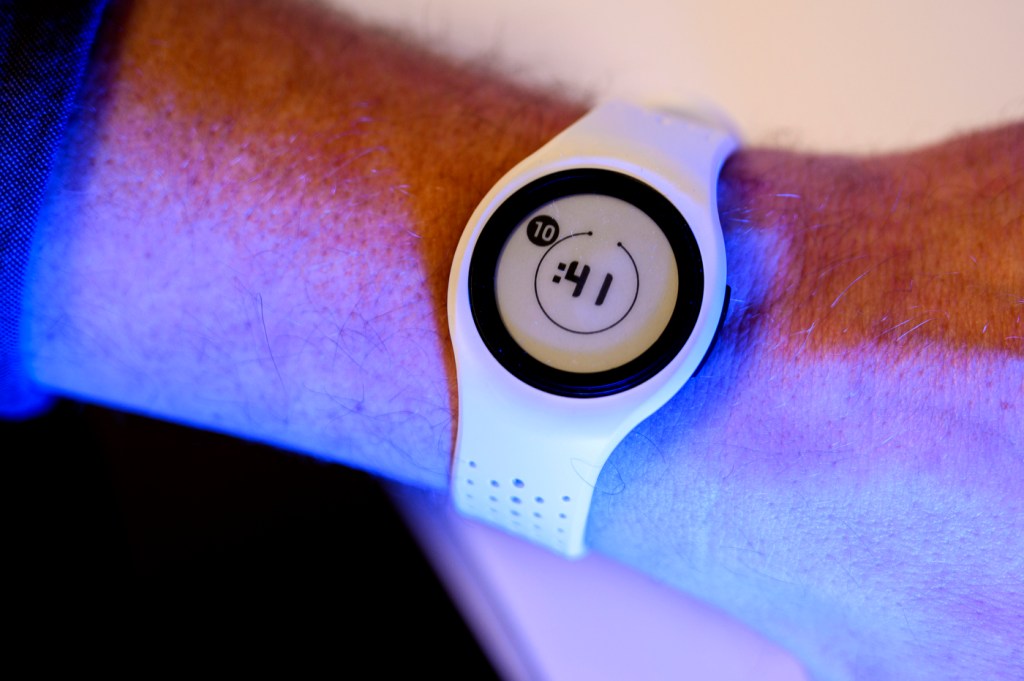Aggression in children with
profound autism can be predicted using machine learning and biosensor data, Northeastern researcher says

It comes “out of the blue.”
That’s a frequent refrain by caregivers of individuals with profound autism who regularly become aggressive and violent.
But what if such behavior could be predicted? How many 911 calls, injuries or volatile situations could be avoided?
Northeastern University professor Matthew Goodwin recently published a study in JAMA Network Open demonstrating that aggressive behavior by youth with profound autism can be predicted 3 minutes in advance and with 80% accuracy using biosensor data and machine learning.
Biosensors can detect certain physiological changes that can indicate possible aggressive behavior.
“Three minutes is enough time to do something,” says Goodwin, an interdisciplinary professor with Northeastern’s Bouve College of Health Sciences and Khoury College of Computer Sciences. “If caregivers know (incidents) are going to occur before they happen, they can stop whatever they’re doing, make sure they have eyes on their child, rearrange the environment to make it safe, and they can try to engage in de-escalation strategies — pre-emptive interventions — where aggression is not the only means for a child to meet his or her needs.”
According to the Centers for Disease Control and Prevention, 1 in 36 children by age 8 is currently being diagnosed with autism, and there are 78 million individuals with autism worldwide. Twenty-seven percent of these 78 million people are considered to have profound autism, which is when a person has an IQ of 50 or below, has limited or no speech and requires 24-hour care because they often engage in aggressive behavior harmful to themselves, others or property.

But this aggression is very hard to predict, and caregivers often report it comes “out of the blue,” leaving them unprepared, Goodwin says. After all, Goodwin notes, most individuals with profound autism can’t articulate their feelings and many have a flat affect or “a poker face most of the time.”
“If you can’t tell when a child is distressed and their aggressive behavior comes out of the blue, what that means is that by the time you’re aware there’s a problem, the only option is crisis and safety management,” Goodwin says. “It’s not a teaching and learning opportunity; it’s a ‘my hair’s on fire,’ stop whatever we’re doing, and try to prevent injury and destruction.”
The unpredictability of these outbursts puts caregivers, patients and others at risk.
Indeed, Goodwin notes that professional care staff for children with profound autism experience more injuries, file more insurance claims and have higher burnout.
When these aggressive incidents occur, caregivers rely on 911 calls, emergency room visits, and inpatient stays at psychiatric facilities — care that Goodwin says comes at a high social and financial cost to society.
If caregivers know (incidents) are going to occur before they happen, they can stop whatever they’re doing, make sure they have eyes on their child, rearrange the environment to make it safe.
Matthew Goodwin, a professor jointly appointed in the Bouvé College of Health Sciences and the Khoury College of Computer Sciences at Northeastern
For all these reasons, caregivers and children with profound autism often isolate themselves at home.
“This is not a path to independence,” Goodwin says.
But Goodwin recognizes that, while the signs may not be readily visible, a profoundly autistic child’s body still must prepare for aggressive behavior.
“If a child is going to start hitting, punching, kicking, themselves or others, or tearing apart the environment, the body has to engage in preparatory physiological changes to support that increased physical demand,” Goodwin says.
The question was how to identify these preparations. One answer is biosensors.
Goodwin worked on the predecessor to the Fitbits and Apple Watches of today while at the MIT Media Lab, and has been waiting for biosensor technology to advance enough to measure “peripheral autonomic signals” such as heart rate, electrodermal activity (often called “emotional sweating,”) skin surface temperature, how much you are moving, and more. The biosensors also had to be wireless, readily and commercially available (thus, not bespoke for the study), and wearable in any setting.
That technology is now available.
With funding from the Simons Foundation, Nancy Lurie Marks Family Foundation and the Department of Defense, Goodwin gave wristwatch-like biosensors to youth with profound autism in four inpatient psychiatric hospitals. He also gave staff a custom mobile app to report the frequency and duration of aggression that involved harm to the patient, others, or harm to property.
Featured Posts
In total, Goodwin received data from 70 youths, including 497 hours of biosensor and behavioral data containing 6,665 aggressive behaviors.
“That’s where the real work comes into play,” Goodwin said.
Using machine learning and artificial intelligence, Goodwin and his team analyzed the data to determine “how much data from the recent past is required to make a prediction of behavior, how far into the future and at what levels of accuracy.”
Goodwin notes that a previous study conducted by his team at a single inpatient site with 20 youths with autism predicted the onset of aggression toward others 1 minute in advance with 70% accuracy.
In the current study, with more data, predictions of aggression toward others, self-injury and meltdowns could be made 3 minutes in advance with 80% accuracy.
Goodwin is next applying his methods in an outpatient setting under the supervision of clinical staff trained to determine the “function of an individual’s aggressive behavior”: for instance, to escape or avoid demands, to access preferred objects or activities.
He hopes combining this information with biosensor data will enable clinicians to develop tailored intervention plans that can be implemented at home to reduce a family’s reliance on emergency room or hospital professionals.
He is also working on cloud computing that enables the biosensor data to be analyzed in real time, so that caregivers can be alerted by text message before a violent incident is likely to occur, relieving parents from constantly monitoring their child and being available when their support is needed.
“The Holy Grail is to prevent aggressive behavior from happening in the first place,” Goodwin says. “If you can’t do that, there is value in being better prepared to manage it and, even if you can’t manage it perfectly, because you’re not completely caught off guard, you’re more likely to learn something about what set it off in the first place and how to better prepare for it.”
Goodwin says that other scientists (the deidentified dataset used in the published study is being provided for free to qualified scientists) have approached him about applying his methods to address other prevalent health situations such as predicting domestic violence situations or incidents for people with bipolar disorder, or post traumatic stress disorder, suicidal ideations and self harm.
But for now, Goodwin is focused on children with profound autism and their caregivers — an understudied and underserved segment of the autism population.
“Families who care for a child with profound autism who engages in aggressive behavior have higher divorce rates, have more mental health problems, have substance abuse problems, their siblings don’t get the care and attention they need from their family, their school systems struggle to help that child manage,” Goodwin says. “It’s a ripple effect that affects a much larger system than just that individual child. I want to help.”











